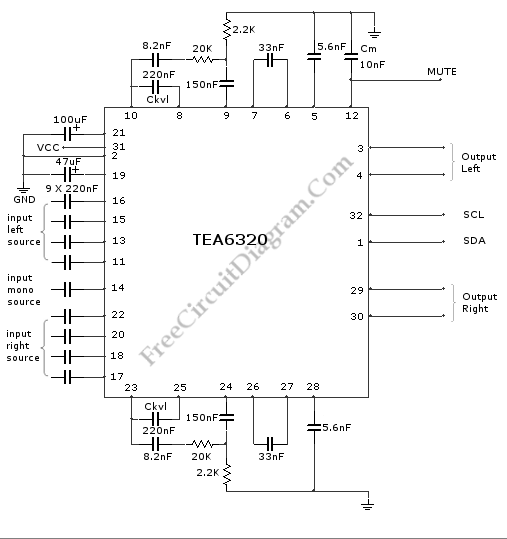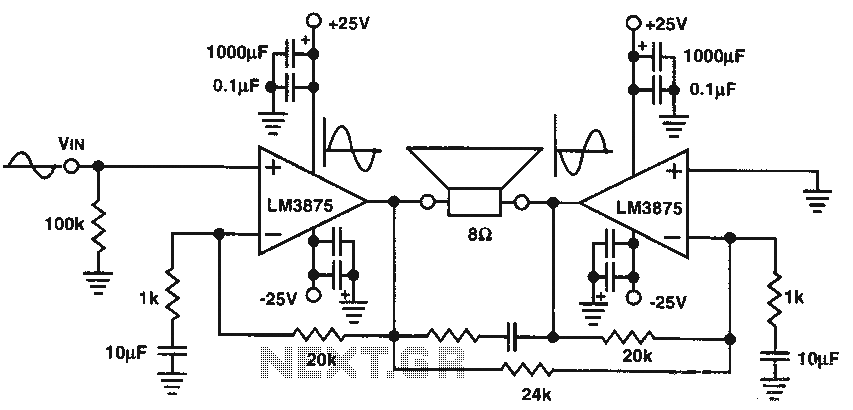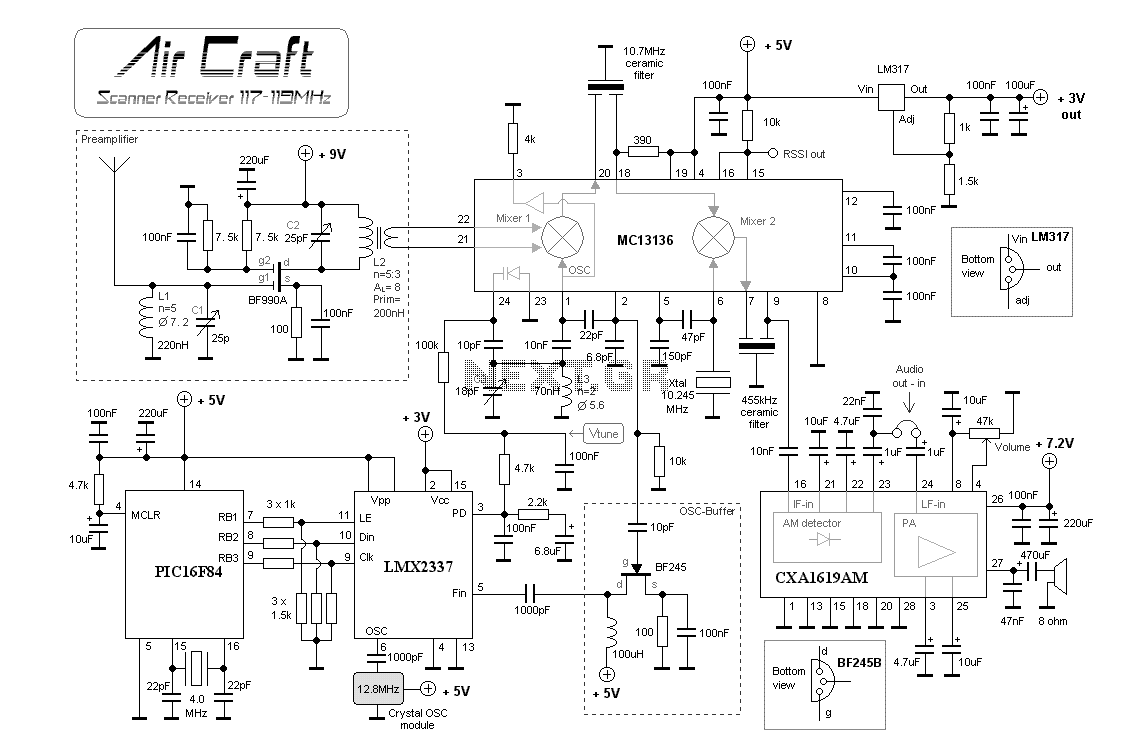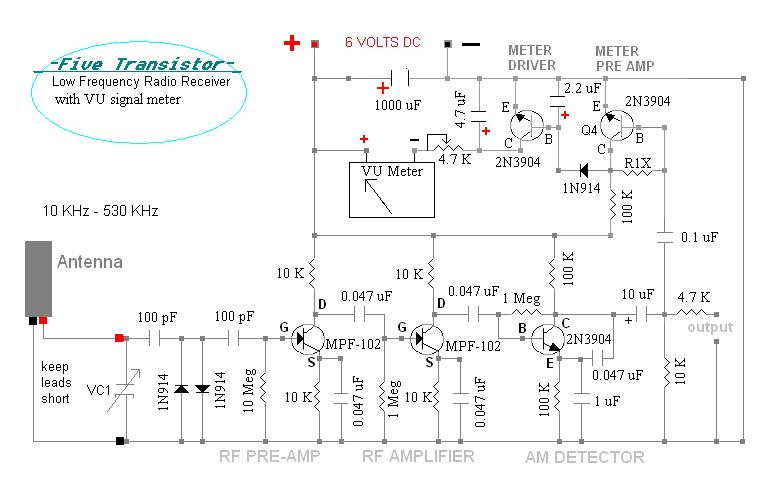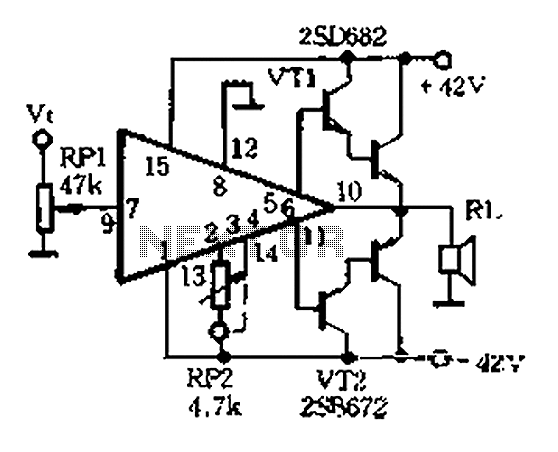
Audio amplifier for portable radio receiver
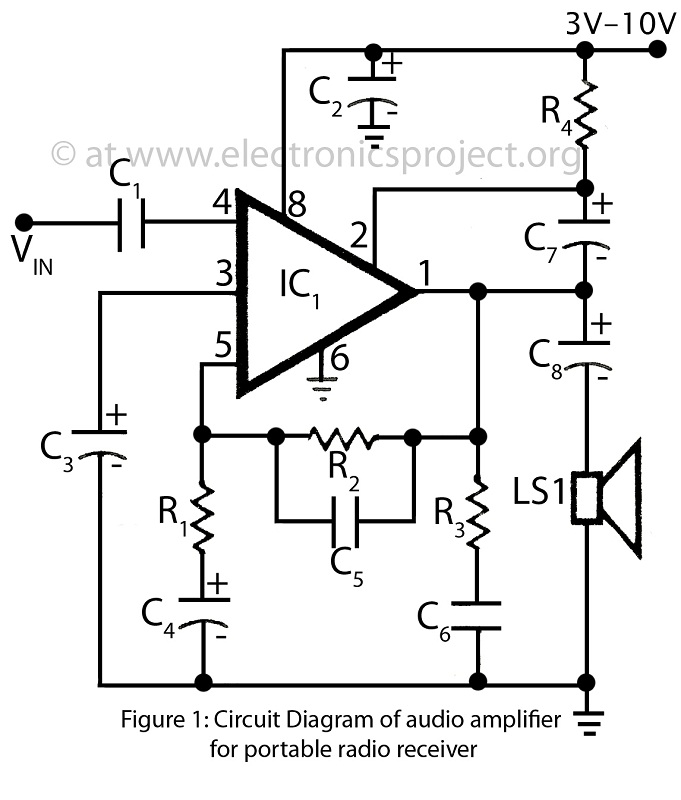
This is a simple audio amplifier circuit built around the BEL1895 1W audio amplifier integrated circuit (IC). This circuit serves as an alternative to more complex audio amplifier circuits designed for portable radio receivers. It does not require a driver circuit for the loudspeaker and supports a wide supply voltage range (VSS) of 3V to 10V. Features such as high sensitivity and a good signal-to-noise (S/N) ratio in AM receivers make this audio amplifier suitable for portable radio applications.
The audio amplifier circuit utilizing the BEL1895 IC is designed for efficiency and simplicity, making it an ideal choice for portable devices. The BEL1895 is known for its low power consumption and ability to deliver a maximum output of 1 watt, which is sufficient for driving small loudspeakers commonly used in portable radios. The circuit layout typically includes minimal external components, which reduces the overall size and complexity, facilitating easy integration into portable designs.
The power supply range of 3V to 10V allows for flexibility in various applications, accommodating different battery configurations. This versatility is particularly beneficial in portable devices where battery life and size constraints are critical. The high sensitivity feature ensures that even weak audio signals can be amplified effectively, which is essential for AM radio reception, where signal strength can vary significantly.
Additionally, the good signal-to-noise ratio (S/N) provided by the BEL1895 enhances audio quality, minimizing unwanted noise and distortion. This is particularly important in portable applications where environmental noise can interfere with audio playback. The circuit can be easily adapted for use in other audio applications, making it a versatile component in the design of compact audio systems.
Overall, the BEL1895 audio amplifier circuit represents a practical solution for designers seeking an efficient, compact, and high-performance audio amplification solution for portable radio receivers and similar devices.This is a simple audio amplifier circuit fabricated around BEL1895 1W audio amplifier IC. This circuit is alternative of the complicated audio amplifier circuit for portable radio receiver. No driver circuit for loudspeaker is needed with the facilities of wide range of supply voltage (VSS) 3V to 10 V. The feature like to obtain high sensitivity a nd good S/N ratio in AM receiver makes this audio amplifier for portable radio receiver versatile. 🔗 External reference
The audio amplifier circuit utilizing the BEL1895 IC is designed for efficiency and simplicity, making it an ideal choice for portable devices. The BEL1895 is known for its low power consumption and ability to deliver a maximum output of 1 watt, which is sufficient for driving small loudspeakers commonly used in portable radios. The circuit layout typically includes minimal external components, which reduces the overall size and complexity, facilitating easy integration into portable designs.
The power supply range of 3V to 10V allows for flexibility in various applications, accommodating different battery configurations. This versatility is particularly beneficial in portable devices where battery life and size constraints are critical. The high sensitivity feature ensures that even weak audio signals can be amplified effectively, which is essential for AM radio reception, where signal strength can vary significantly.
Additionally, the good signal-to-noise ratio (S/N) provided by the BEL1895 enhances audio quality, minimizing unwanted noise and distortion. This is particularly important in portable applications where environmental noise can interfere with audio playback. The circuit can be easily adapted for use in other audio applications, making it a versatile component in the design of compact audio systems.
Overall, the BEL1895 audio amplifier circuit represents a practical solution for designers seeking an efficient, compact, and high-performance audio amplification solution for portable radio receivers and similar devices.This is a simple audio amplifier circuit fabricated around BEL1895 1W audio amplifier IC. This circuit is alternative of the complicated audio amplifier circuit for portable radio receiver. No driver circuit for loudspeaker is needed with the facilities of wide range of supply voltage (VSS) 3V to 10 V. The feature like to obtain high sensitivity a nd good S/N ratio in AM receiver makes this audio amplifier for portable radio receiver versatile. 🔗 External reference
